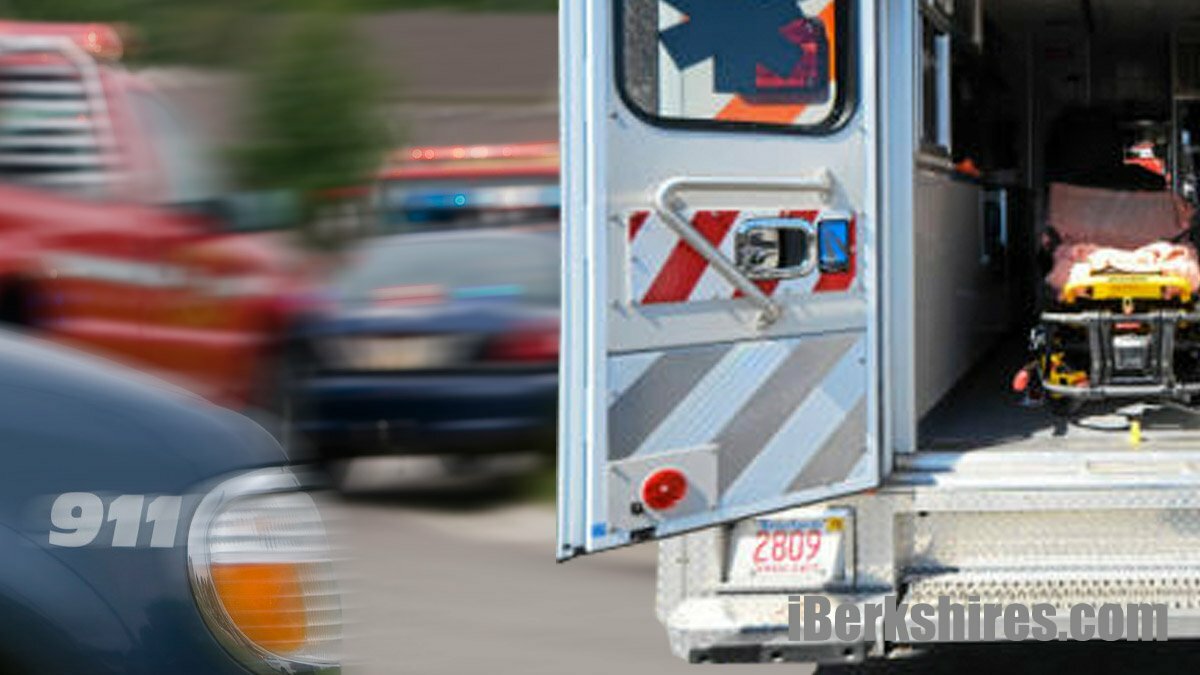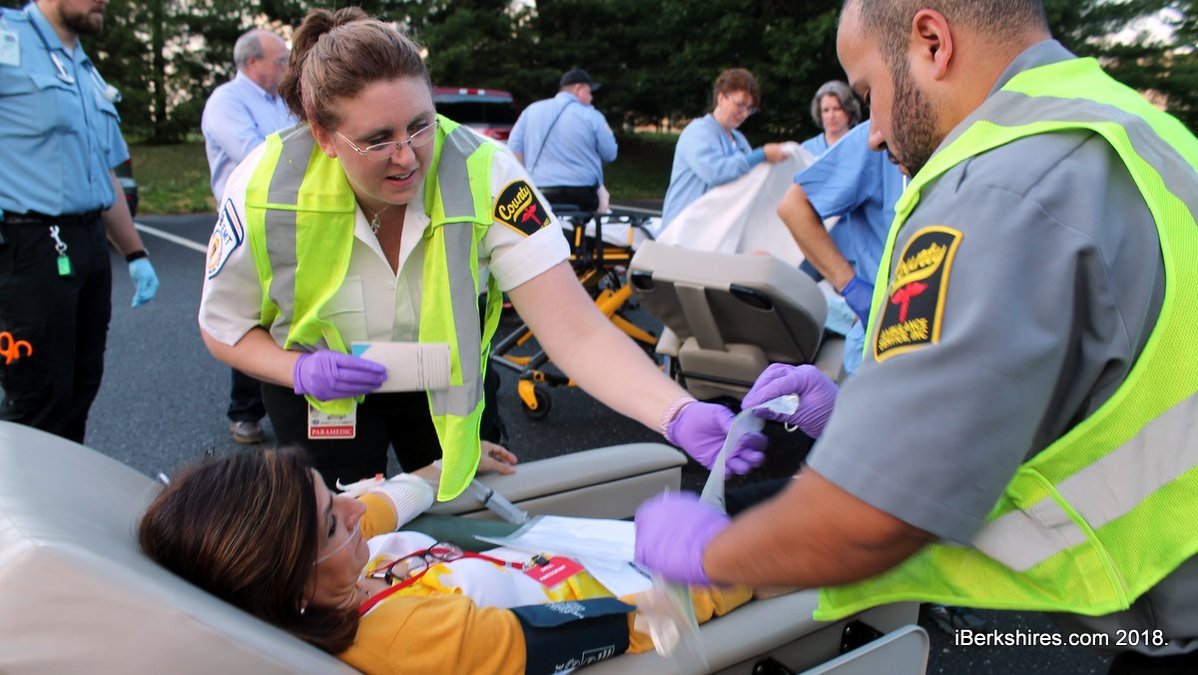"Currently, EMS services are provided to the county's 128,000 residents through a patchwork system that results in unpredictable response times and inconsistent quality of emergency care from one community to another," the research project says.
A team of students in the course "Organizational Behavior in Nonprofit and Public Organizations" spent a semester to research EMS services in 16 municipalities within North and Central County.
They worked with Paul Sieloff, representing the Massachusetts Municipal Management Association in the Berkshires, and Berkshire Regional Planning Commission Public Health Planner Aaron Holman-Vittone.
According to the report, little EMS-related research has been conducted in the region of
northern and central Berkshire County.
"These 14 towns and two cities form the extent of Berkshire County not included in a 2019 EMS study conducted by Hanifen & Associates LLC for the southern half of the county," according
The study area is served by eight EMS providers that employ emergency medical technicians trained and equipped to offer Basic Life Support and/or Advanced Life Support .
The providers include: Dalton Ambulance, Lanesborough EMS, Windsor EMS, Becket Ambulance (also serving Washington), Hinsdale Volunteer Firemen's Association, also serving Hinsdale and Peru, and Northern Berkshire EMS, which also serves Adams, Cheshire, Clarksburg, Florida, Hancock, New Ashford, North Adams, Savoy and Williamstown.
Serving Pittsfield is County Ambulance and Action Ambulance, which are for-profits under contract with the city. These recommendations would not effect these entities.
During the research process, 19 stakeholders were contacted with requests for interviews, and 11 interviews were conducted. A survey as also sent out to 26 stakeholders, but only nine responses were submitted.
"Both interviews and surveys provided insight that supported team members to make educated recommendations on how to best tackle issues surrounding rural emergency medical services, financial challenges, organizational structure, health-care access, and more," the report said.
The study's data revealed that some communities had fewer than 1,000 EMS calls per year, while others had more than 2,000.
According to the findings, response times ranged from 10 to 30 minutes. The areas with the longest response times were rural areas because of remoteness because of geographically complex landscapes.
It has been
previously reported by iBerkshires that Middlefield has a wait time of approximately 45 minutes for EMS services. Dalton Fire Department made six calls to Middlefield last year, which is a large chuck of its total calls.
"There is an increased risk of mortality due to the long response times, this is due to the fact that seconds matter in cases that involve life-threatening injuries," the EMS study says.
"These longer response times can lead to adverse outcomes for patients, including a decline in survival rates."
Other EMS issues for rural communities documented within the report included lack of adequate
healthcare access and educational literacy, financial challenges of doing business, and insufficient policy coordination.
"Adequate funding is needed to support ambulatory expenses and equipment to respond to
emergencies. Since the frequency, duration and severity of future emergencies cannot be known, how much funding will be needed is difficult to predict, creating budget challenges. These challenges include medical costs, health-care costs, and educational programming," the report says.
"The range of medical costs an EMS provider incurs on a call depends on the severity of the patient's needs and ability to pay for services. If a patient receives medical services but doesn't have the financial means to pay, the unpaid costs are borne by the EMS provider. This occurs due to healthcare costs and affordability, which both play a factor in financial challenges for the patient, and inevitably, the healthcare facility."
The report also documented how some communities that lack ambulances entirely, while others had one or more.
According to previous reports, Peru, for example, relies on other communities for services because it does not have an ambulance.
Another challenge documented for rural areas is the lack of volunteers to fill the EMT positions because many people live far away from the agency or work out of town, making it challenging to have daytime shit coverage.
The lack of available volunteers cause the town to turn to paid services, which can be financially burdensome for the area.
"Some agencies do not have the money in their budget to staff or upkeep their ambulances. Paid staff and volunteers also face these challenges due to many distinct factors such as burnout, limited career growth, and competitive salaries in other fields," the report says.
The report recommended that EMS services implement innovative recruitment strategies, enhance career development opportunities, and promote work-life balance to help address this issue.
It also highlighted how many local youth relocate for education and job opportunities.
"If there were increased offerings for paid positions amongst [Northern Berkshire EMS], there could potentially be an increase in involvement and organization retention. While this is consequential, issuing recommendations with regard to regional economic development is outside the scope of this report," it said
Another challenge documented is a lack of communication between EMS agencies, which leads "to duplication of services in some areas with increased shortages of services in others."
It also documented mindset challenges in rural EMS agencies due to hierarchical structures "that do not address the concerns of staff, volunteers, or citizens at an individual level, making change difficult at a higher level."
"When tasks have always been handled in a certain way, calling for change is difficult to
have all stakeholders in agreement … Personnel who have been with departments for a long time often like things done the same way as always and therefore have a difficult time accepting change," the study explains.
"This mindset makes allowing or adapting to change in the departments difficult because of the pushback from conflicting mindsets."
Based on their findings, the recommendations several recommendations were made including a push for regionalization in Central Berkshire County for EMS services, the establishment of a public funding structure for Northern Berkshire EMS, updating the region's service zone planning, and encourage regionwide EMS innovation for recruitment practices.
The study recommends that "the towns of Windsor, Peru, Hinsdale, Dalton, and Lanesborough work collaboratively to study the feasibility of establishing a regional EMS department."
The Dalton Fire District has already approved participating in an EMS regionalization study with the towns of Savoy, Dalton, Hinsdale and Peru.
Windsor was also asked if it wanted to participate in the study but opted out because it was already involved in a separate study with Amherst College. Windsor's call data is available, however through Dalton's dispatch center.
The Hampshire County town of Middlefield was also going to be included, but its fire chief decided not to sign the letter of participation despite heavily relying on bordering towns for its EMS services. More information
here.
The study highlighted the success of regionalization by siting how Northern Berkshire EMS expanded "its coverage area while still providing the same quality of care through a three-part merger with Village Ambulance, and Adams Ambulance."
The study also cautions Northern Berkshire EMS from primarily depending on insurance reimbursements and encourages them to establish a public funding structure.
It emphasizes the need for public funding to supplement current revenue sources, especially to cover non-reimbursable services, such as non-transport calls and limited reimbursements for Medicare patients.
"It cannot be emphasized enough that, with two failed EMS services, NBEMS is the last line of support. If NBEMS is forced to fold, this area of the region will have no clear remaining options for delivering EMS, and the result would be the absence of a crucial component of healthcare in the local area, with the threat of becoming a healthcare service desert," the report says.
The report suggests the nine Berkshire County municipalities served by this department establish a oversight committee with representation from each community and executive
leadership from NBEMS.
"This committee would be tasked with agreeing on a feasible funding arrangement that is fair and equitable. Meanwhile, the committee would also be able to offer oversight to ensure transparency and fiscal responsibility on the part of the organization."
The report highlighted how Adams, Cheshire, Dalton, Hinsdale, Peru, and Windsor do not have approved Service Zone Plans which is out of compliance with state Department of Public Health regulations.
"Service Zone Plans are critical for ensuring regulatory compliance, maintaining
service continuity and supporting effective EMS response coordination," the report says.
The lack of SZPs exposes these communities to potential future penalties and legal liabilities.
The report recommended that these communities coordinate with the office of Western Mass Emergency Medical Services to develop either a standalone SZP to meet DPH requirements or a multi-town SZP.
"The standalone approach allows for customization that is specific to each town's operational needs. However, the multi-Town option may reduce administrative burden, streamline the planning process, and improve regional coordination of EMS services. It may also facilitate resource sharing and improve response efficacy," the report says.
"Regardless, these six towns need to prioritize compliance with SZP regulations. This step will ensure standardized documentation, promote regulatory adherence and support a more integrated EMS system across the region."



